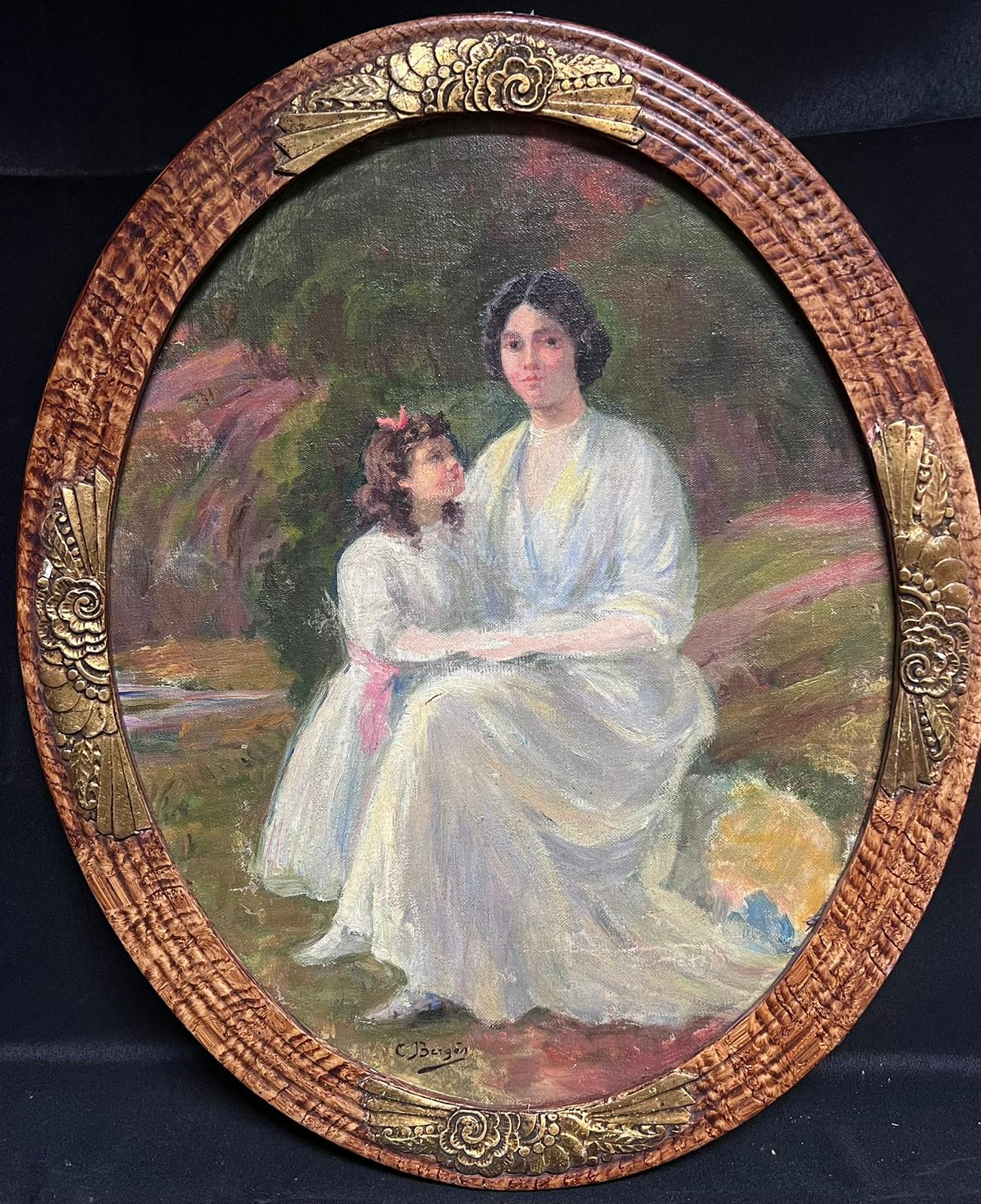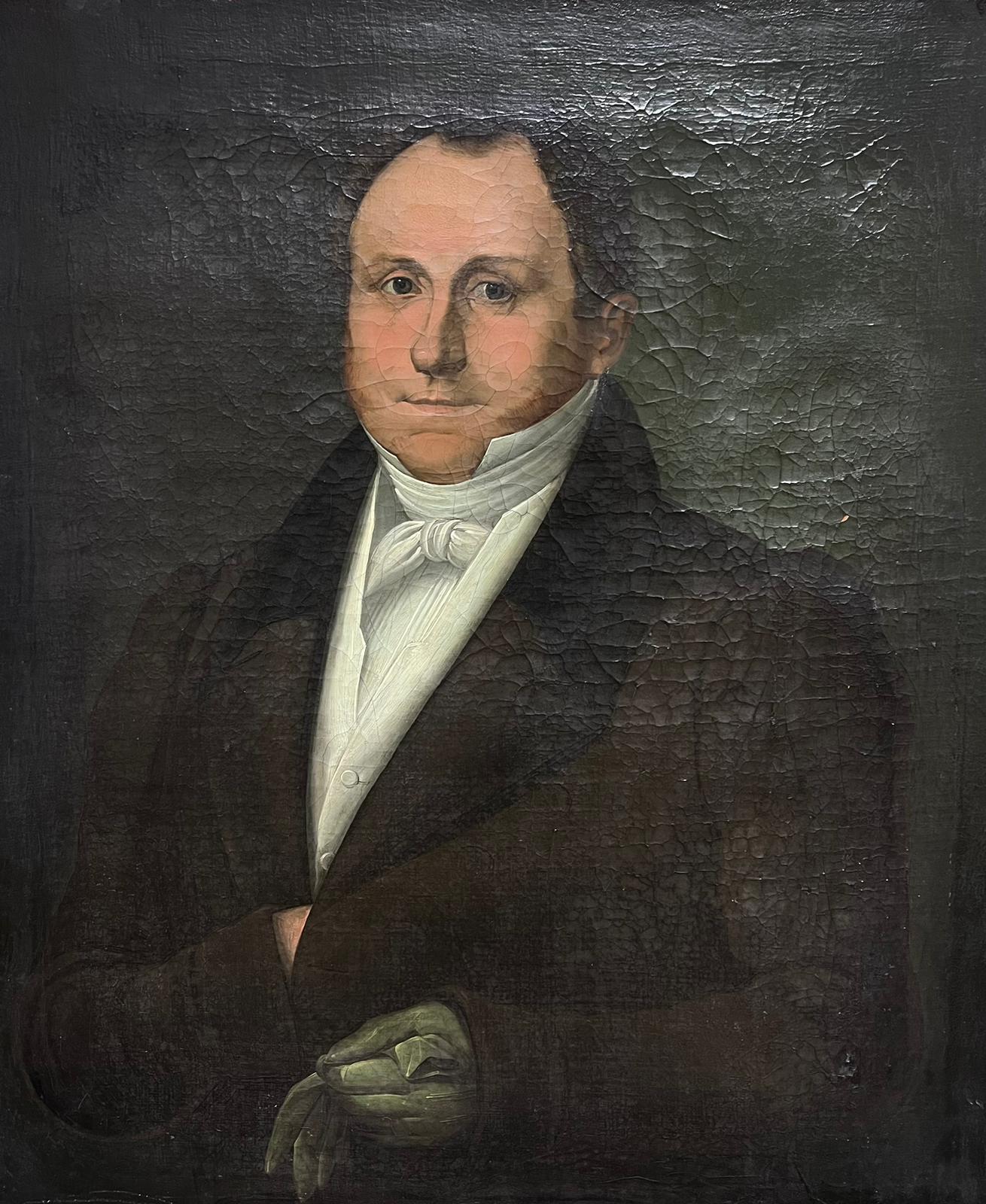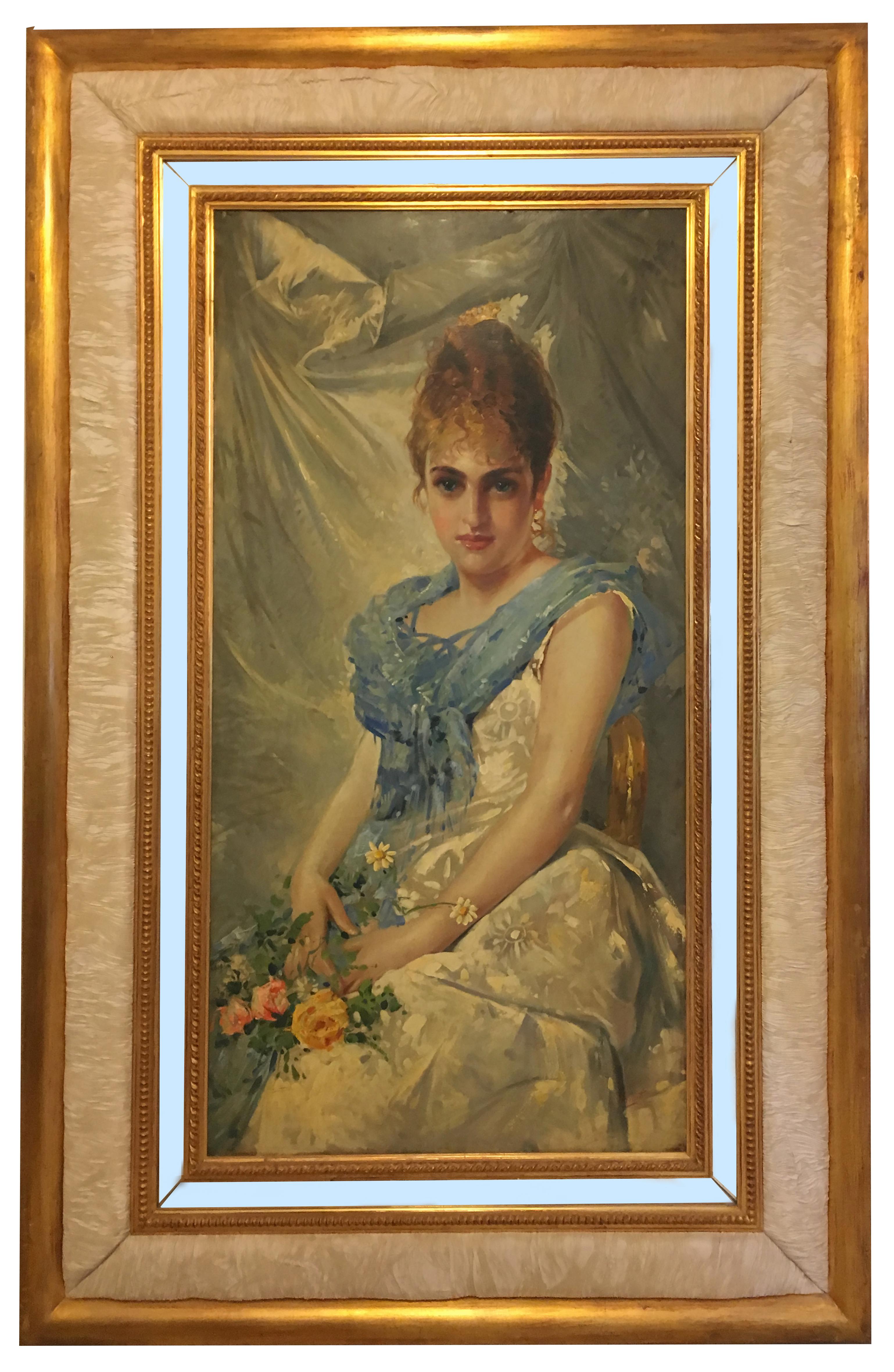Items Similar to The death of Demosthenes
Want more images or videos?
Request additional images or videos from the seller
1 of 8
Jules LefebvreThe death of Demosthenes
About the Item
Jules Joseph LEFEBVRE
(Tournan-en-Brie, 1834 – Paris, 1912)
The death of Demosthenes
Oil on canvas
Signed and dedicated lower left
38x46cm
Son of Toussaint Martin Lefebvre, a baker by profession, and Carole Adélaïde Duval, Jules Joseph Lefebvre was born on March 14, 1834, in Tournan-en-Brie (Seine et Marne).
The family settled sometime later in Amiens, around 1836. Then noticed by his drawing teacher at the municipal school, the city awarded him a scholarship to complete his studies in drawing and painting in Paris. Jules Lefebvre entered the Ecole des Beaux-Arts in Paris in 1852 in the studio of Léon Cogniet. Nine years later, he won the Grand Prix de Rome in 1861 with his Death of Priam. Many official recognitions and distinctions followed: third class medal in 1865, second class medal in 1868, first class medal in 1870; first class medal at the Universal Exhibition in Paris in 1878, medal of honor in 1886, grand prize at the Universal Exhibition in Paris in 1889 and member of the jury at the Universal Exhibition in Paris in 1900.
On June 26, 1869, Jules Lefebvre married Louise Deslignières, daughter of the architect Alexandre Deslignières, who gave him five children, one of whom was Captain in the long court and the youngest sculptor.
As an excellent representative of academic painting, Jules Lefebvre exhibited at the Paris Salon for more than fifty years and very regularly between 1855 and 1910. In 1891, he was admitted as a member of the Académie des Beaux-Arts. Also teaching at the Académie Julian, he was a renowned professor who saw many French and foreign students pass through, including, among others: Georges Rochegrosse, Camille Bourget, Paul Landowski, Fernand Khnopff, William Hart, Childe Hassam, Elisabeth Sonrel, Henri Biva , Louis Valtat, Victor Pierre Ménard… His studio was located at 5, rue de La Bruyère in Paris.
Jules Lefebvre was first of all a great portrait painter of his time with more than seventy portraits exhibited at the Parisian Salons, both portraits of his own family and of the high society of the 19th century, French and foreign, this justifying his presence in the most major international museums. Of particular note in 1874 is a very fine portrait of the Prince Imperial. He was also a renowned nude painter, going so far as to compete with Bouguereau in this field. His best-known work is undoubtedly La Vérité, a naked woman emerging from a well and carrying a mirror at arm's length. But the triumph and official recognition came with his history painting, which offered him his Prix de Rome. Our Death of Demosthenes, even in a modest format, is a good example.
Jules Lefebvre also rubbed shoulders with great decor by painting the Parisian ceilings of the Court of Cassation and the Salon des Lettres of the town hall. His art was internationally renowned, as evidenced by the creation of the ceilings of the Vanderbilt Hotel in New York.
The artist died in Paris on February 24, 1912 following a long illness. He is buried in the Montmartre cemetery in the 14th division, chemin Saint-Eloy. His tomb is the work of the architect Samson and is decorated with a bas-relief of Maurice Lefebvre – his youngest son – and Ernest Dubois. Indeed, Maurice died a year before his father without having been able to finish his father's tomb. It was his teacher Ernest Dubois who completed it in a burst of kindness for the family.
Jules Lefebvre is Commander of the Legion of Honor and Officer of the Order of Academic Palms.
Museums: Cambrai, Amiens, Reims, Paris (ENSBA and Mus. d'Orsay), Valenciennes, Nemours, Auxerre, Compiègne, Melbourne, Chicago, Ghent, Omaha, Saint-Petersburg, Buenos Aires, New-York (MET, Dahesh), Versailles, Pau, Baltimore, Rome, Istanbul, Budapest, Santiago de Chile…
The death of Demosthenes was a subject for the 1879 Prix de Rome competition won by Alfred-Henri Bramtot, then a pupil of Bouguereau.
Jules Lefebvre's canvas is dedicated to Alfred Jean Marie Broquelet (Abbeville, 1861 – 1957). Broquelet is a French lithographer, student at the Académie Julian de Maurou, Fuchs, Bouguereau and Robert-Fleury. It is probably there that he was able to meet Jules Lefebvre then a professor and that they were able to sympathize around their beloved Picardy...
- Creator:Jules Lefebvre (1836 - 1912)
- Dimensions:Height: 14.97 in (38 cm)Width: 22.05 in (56 cm)
- Medium:
- Movement & Style:
- Period:
- Condition:
- Gallery Location:PARIS, FR
- Reference Number:
About the Seller
No Reviews Yet
Vetted Seller
These experienced sellers undergo a comprehensive evaluation by our team of in-house experts.
Established in 2014
1stDibs seller since 2022
7 sales on 1stDibs
- ShippingRetrieving quote...Ships From: PARIS, France
- Return PolicyThis item cannot be returned.
More From This SellerView All
- Bread, fourme de Rochefort-Montagne and pottery on a wooden tableLocated in PARIS, FRA. FERREYROLLES (active around 1880) Bread, fourme de Rochefort-Montagne and pottery on a wooden table Oil on canvas Signed and dated lower right 73 x 59 cm 1881 Few things are known to us about this Auvergne artist, who could to be Antoine Ferreyrolles, born in 1842 in Murat-le Quaire, about thirty kilometers southwest of Clermont-Ferrand; his surname being also very widespread in this part of Puy de Dôme. The Murol museum preserves three of his paintings, local landscapes, and there is a Entombment, painted in 1880 for the decor of the church of Rochefort-Montagne. There is also a Still Life with Game, dated 1886, and apparently in the same vein as our painting. This is executed in a very realistic style, bordering on trompe l'oeil, visibly inspired by artists from the beginning of the 17th century, such as the German Georg Flegel, the Dutch Floris Van Schooten or the Antwerp artist. Clara Peeters...Category
Late 19th Century French School Still-life Paintings
MaterialsOil
- People's woman of Venice, ItalyLocated in PARIS, FRHenri Auguste Cesar SERRUR (Lambersart, 1794 – Lille, 1876) People's Woman of Venice Oil on canvas Signed, located and dated 65 x 60 cm Venice 1850 Exhibitions: - Paris Salon of 1...Category
Mid-19th Century French School Figurative Paintings
MaterialsOil
- The adoration of the shepherdsLocated in PARIS, FRFélix COTTRAU (Paris, 1799 - Paris, 1852) The adoration of the shepherds Oil on canvas Signed and dated lower right 100.5 x 76 cm 1842 Ex...Category
Early 19th Century French School Figurative Paintings
MaterialsOil
- Presumed portrait of Athanase Peltier in front of the Fort of Ham - FranceLocated in PARIS, FRÉdouard Henri Théophile PINGRET (Saint-Quentin, 1785 – Paris, 1869) Presumed portrait of Athanase Peltier in front of the Fort of Ham Oil on canvas Signed and dated lower left 40.5...Category
Early 19th Century French School Portrait Paintings
MaterialsOil
- The death of General Négrier on Place de la Bastille, Paris - FranceBy Nicolas Edward GabéLocated in PARIS, FRNicolas Edward GABE (Paris, 1814 - Paris, 1865) The death of General Négrier on Place de la Bastille on June 25, 1848 Oil on canvas Signed and dated lower right 82 x 101 cm 1849 Nicolas Edward Gabé is a 19th century artist who is still little studied to this day and yet seems to have enjoyed, according to the artistic press of the time, a certain notoriety, in particular for his seascapes. The few bibliographical elements that we have come from the Salon booklets and tell us that the artist was born in Paris in 1814, therefore shortly before the end of the Empire. No elements on his artistic training are mentioned in the booklets, we just know that Gabé exhibited at the Paris Salon from 1835 to 1864 where he first practiced miniature then then approached easel painting, risking himself as well in still life that the seascapes, the landscape, the portrait or the hunting. According to press articles, he also took part in various exhibitions in the provinces such as Boulogne-sur-Mer and Marseille. Notably, Gabé did not exhibit at the Salon his large historical canvases on the revolution of 1848, which today are of obvious documentary and iconographic interest; probably for political reasons which are easily understandable to us today in view of the historical events of then. Gabé died in Paris at the age of 51 on January 4, 1865 with a mention in the January 7, 1865 edition of L'Union des Arts: “The death of Mr. Gabé, painter, well known in the export trade in paintings as well as to the auctioneers' hotel, whose sales it supplied through its numerous navies. “ "On June 25, 1848, in front of the barricades erected in the Bastille by the insurgents of the Red Republic, General Négrier fell to death, while he was uttering words of order and conciliation". Here are the opening lines of the tribute paid by Colonel Borgarelli d´Ison, friend of General Négrier. General Négrier belonged to a family from Maine, brought back by Marshal Lannes from emigration. Born in Le Mans on April 27, 1788, François Marie Casimir de Négrier entered, barely 18, as a volunteer in the 2nd Light Infantry Regiment. He began in 1806 with the campaigns of Prussia and Poland, during which he earned, through his bravery, the rank of sergeant and the decoration of the Legion of Honor. He made the following campaigns in Spain and Portugal, and left, with his regiment, only for the campaign of France, in 1814, after having risen successively, by actions of brilliance and by a serious wound, to the ranks of head of battalion and officer of the Legion of Honor, with which he was provided from October 1813. The Restoration retained his rank in his regiment. After having fought and wounded a second time seriously in Waterloo, Négrier was recalled in 1816 under the second Restoration. He was appointed, in 1825, lieutenant-colonel, then colonel in 1830, brigadier general in 1836, and of division in 1841. From March 1837 he participated in the conquest of Algeria. The Revolution of 1848 found Negrier in possession of the important command of the 16th Military Division in Lille. Quaestor of the Assembly in these times which promised to be troubled, Négrier reviewed the Place de la Concorde on June 23 at around noon various mobile guard battalions. He then took the head of 2,000 men provided by the 10th and 11th legions of the national guard and bivouacked on the Place du Palais until the next day 24. On Sunday 25 at nine o'clock, the Négrier division resumed the fight towards the Saint suburb. -Antoine. The troop gains continual advantages. At around two o'clock the column of Négrier had seized the Pont Marie: it had removed the barricades from the Quai Saint-Paul, the rue de l'Etoile, the rue des Barres...Category
Mid-19th Century French School Figurative Paintings
MaterialsOil
- The Holy FamilyLocated in PARIS, FRHenri Augustin GAMBARD (Sceaux, 1819 – Paris, 1882) The Holy Family Oil on canvas Signed on the left 24.5 x 32.5 cm Son of a soldier, Henri Augustin Gambard was born on October 30...Category
Mid-19th Century French School Figurative Paintings
MaterialsOil
You May Also Like
- Charming Oval 19th Century French Signed Oil Mother & Daughter in GardenLocated in Cirencester, GloucestershireMother & Daughter French artist, late 19th century signed oil on board, framed framed: 22.5 x 18.5 inches board: 20 x 15 inches provenance: private collection, France condition: very...Category
Late 19th Century French School Portrait Paintings
MaterialsOil
- Fine Antique French Signed Oil Painting Portrait Young Lady in TurbanLocated in Cirencester, GloucestershirePortrait of a Young Lady wearing pink and a Turban headpiece by Henri-Charles Daudin (1864-1917, French) signed oil on wood panel, unframed board: 14 x 10.5 inches provenance: privat...Category
Late 19th Century French School Portrait Paintings
MaterialsOil
- Large 1800's French Empire Period Portrait of Gentleman with Silk GlovesLocated in Cirencester, GloucestershirePortrait of a French Gentleman, circa 1800's French artist, Empire period oil on canvas, unframed canvas: 29.5 x 25 inches provenance: private collection, France condition: a few min...Category
Early 19th Century French School Figurative Paintings
MaterialsOil
- Very Fine 19th Century French Signed Oil Painting Young Girl with Dog InteriorLocated in Cirencester, GloucestershireThe Favourite Pet by Lucien Gerard (French 1852-1935) signed lower right corner oil on wood panel, framed panel: 8.75 x 6.75 inches plus the substantial antique gilt frame provenance...Category
Late 19th Century French School Figurative Paintings
MaterialsOil
- SPRING BEAUTY - Angelo Granati - Oirtrair of Oil on Canvas PaintingBy Angelo GranatiLocated in Napoli, ITSPRING BEAUTY - Oil on canvas painting by Angelo Granati, Italy 2011 Gold leaf gilded, pleated silk and mirror wooden frame ext. mis. cm. 164x106. This is his reinterpretation of pa...Category
2010s French School Figurative Paintings
MaterialsCanvas, Oil
- CHILD- In the Manner of W.A. Bouguereau Figurative Italian Oil on Canvas PaintBy Giovanni SantanielloLocated in Napoli, ITChild - Oil on canvas cm.90x60, Giovanni Santaniello, Italy 2002 The painting by Giovanni Santaniello depicts a young girl sitting under a stone arch, the painting is inspired by th...Category
Early 2000s French School Figurative Paintings
MaterialsOil, Canvas





